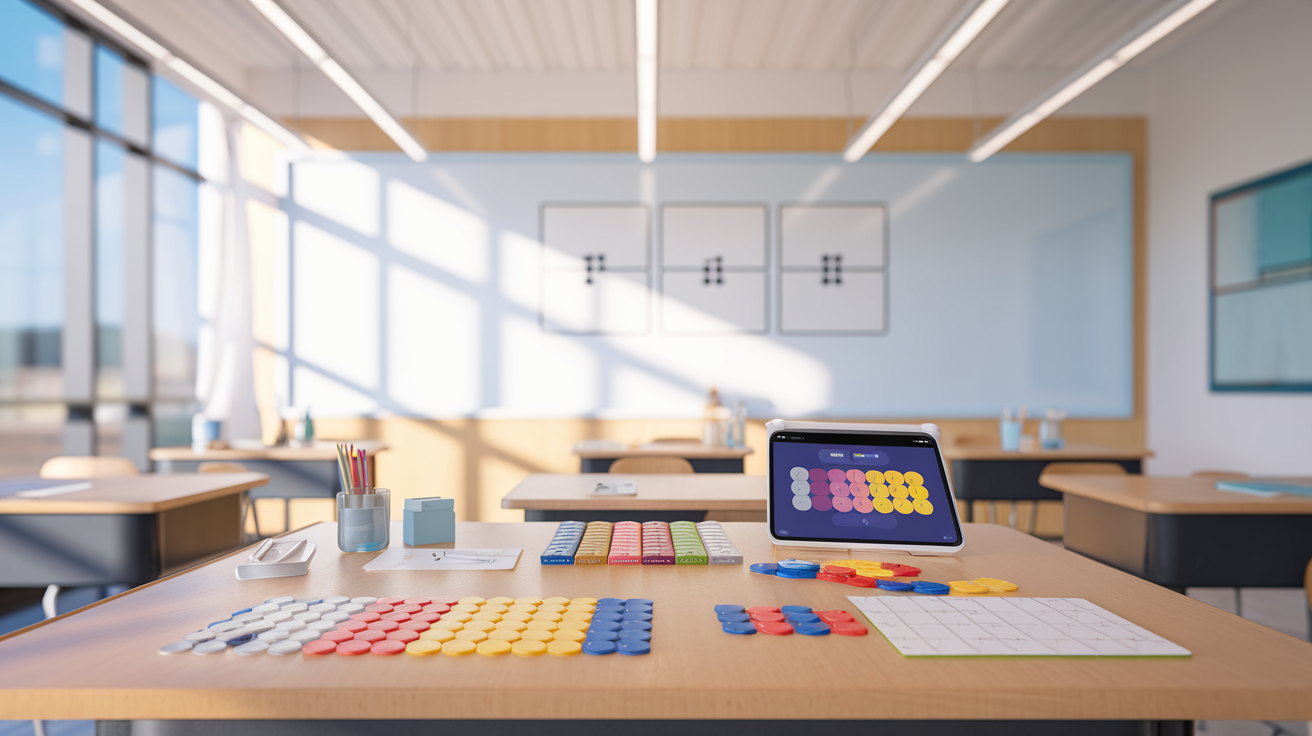- Jun 15, 2025 -
Choosing Secondary Schools After PSLE: A Comprehensive Guide for Parents

Table of Contents
- Understanding PSLE Scores and Cut-Off Points
- Types of Secondary Schools in Singapore
- Important School Selection Criteria
- Direct School Admission (DSA) Scheme
- Making the Most of School Open Houses
- Filing Your School Preferences Strategically
- Preparing Your Child for Secondary School Transition
- Common Mistakes Parents Make When Choosing Schools
- Frequently Asked Questions
The completion of PSLE marks a significant milestone in your child’s educational journey. As a parent, choosing the right secondary school is one of the most important decisions you’ll make in supporting your child’s future. This transition period can be overwhelming, filled with questions about cut-off points, school cultures, academic programs, and which environment will best nurture your child’s unique talents.
At EduFirst Learning Centre, we’ve guided thousands of Singapore families through this crucial decision-making process. Our educators have observed that successful school selection goes beyond just considering PSLE scores—it involves understanding your child’s learning style, interests, strengths, and long-term aspirations.
This comprehensive guide will walk you through every aspect of selecting a secondary school after PSLE, from understanding the scoring system to considering various school types, facilities, CCAs, and culture. We’ll share practical insights to help you and your child make an informed decision that sets them up for success in their secondary education journey.
Understanding PSLE Scores and Cut-Off Points
The PSLE scoring system is the foundation of the secondary school posting process. Understanding how it works is essential for making informed decisions about school choices.
The Achievement Level (AL) System
Since 2021, the PSLE has used the Achievement Level (AL) scoring system. Each subject is scored on bands from AL1 (the highest) to AL8 (the lowest). The sum of the four subjects’ ALs creates the student’s overall PSLE score, with the best possible score being 4 (AL1 in all subjects) and the lowest being 32 (AL8 in all subjects).
This system aims to reduce over-emphasis on academic scores and recognize that students with similar competencies should have similar scores, moving away from the previous T-score system that forced a bell curve distribution.
Cut-Off Points (COPs) Explained
Each secondary school has a Cut-Off Point (COP) based on the PSLE score of the last student admitted in the previous year. COPs can vary from year to year depending on demand and the performance of the cohort. Understanding these historical COPs can help set realistic expectations, but remember that they are not fixed thresholds.
Schools are categorized into different streams based on these COPs:
• Express stream schools typically have lower (better) COPs
• Normal Academic (NA) stream has higher COPs
• Normal Technical (NT) stream has the highest COPs
It’s advisable to consider schools with COPs that are 2-3 points above your child’s expected score to account for yearly fluctuations and ensure a higher chance of admission.
Types of Secondary Schools in Singapore
Singapore’s diverse secondary education landscape offers various school types catering to different learning needs and aspirations.
Government Schools
Government schools form the backbone of Singapore’s secondary education system. These schools follow the national curriculum set by the Ministry of Education (MOE) and offer a comprehensive education experience with a wide range of academic subjects and co-curricular activities.
With standardized facilities and teaching methodologies, government schools provide a solid foundation for students. Fees are highly subsidized for Singapore citizens, making them an accessible option for most families.
Autonomous Schools
Autonomous schools are government schools given additional funding and greater flexibility in developing their programs. This autonomy allows them to offer a more diverse range of subjects, teaching approaches, and enrichment activities beyond the standard curriculum.
These schools often have distinctive educational philosophies or specialized programs that set them apart, while still maintaining the core educational standards set by MOE.
Independent Schools
Independent schools have the greatest autonomy in curriculum planning, staff recruitment, and resource allocation. They typically offer a more customized educational experience with enrichment programs, specialized facilities, and sometimes international curriculum options.
While these schools receive some government funding, they generally charge higher fees. Many of Singapore’s top-performing schools fall into this category, and they often have more competitive admissions requirements.
Specialized Schools
Specialized schools focus on developing specific talents and abilities:
• School of Science and Technology (SST): Emphasizes applied learning in science, technology, engineering, and mathematics (STEM)
• School of the Arts (SOTA): Integrates arts education with an academic curriculum
• NUS High School of Math and Science: Focuses on mathematics and science education
• Sports School: Provides flexibility for student-athletes to pursue both sports and academics
These schools offer tailored programs for students with strong interests and aptitudes in specific domains, creating pathways for specialization from an early age.
IP vs. O-Level Track Schools
The Integrated Programme (IP) allows high-performing students to proceed directly to junior college without taking O-Level examinations, providing a seamless six-year program. This track is designed for academically strong students who are certain about pursuing a university education.
Traditional O-Level track schools prepare students for the Singapore-Cambridge GCE O-Level examinations at the end of Secondary 4 or 5. This provides students with more flexibility in choosing their post-secondary pathways, including junior colleges, polytechnics, or ITE.
Important School Selection Criteria
Beyond PSLE scores and school types, several key factors should influence your school selection decision.
Academic Strengths and Teaching Approaches
Different schools excel in different academic areas. Some may have particularly strong science, humanities, or language departments. Research a school’s academic track record in subjects your child is interested in or shows aptitude for.
Teaching methodologies also vary—some schools emphasize collaborative learning, while others focus on independent research or project-based learning. Consider which approach best matches your child’s learning style.
Co-Curricular Activities (CCAs)
CCAs form a significant part of the secondary school experience, developing skills beyond academics. Schools often have signature or niche CCAs where they excel at national competitions.
When evaluating schools, investigate whether they offer CCAs aligned with your child’s interests, whether in sports, performing arts, clubs, or uniformed groups. A strong CCA program can provide valuable opportunities for character building, leadership development, and the pursuit of passions.
School Culture and Values
Every school has its unique ethos and value system. Some emphasize academic excellence and competition, while others focus more on holistic development or community service.
Consider whether a school’s culture aligns with your family values and your child’s personality. A supportive environment that resonates with your child’s character can significantly impact their motivation, sense of belonging, and overall well-being during these formative years.
Location and Accessibility
Practical considerations matter. A school’s proximity to home affects daily commute time, which impacts your child’s sleep, study hours, and energy levels.
Evaluate the transportation options available—whether the school is within walking distance, accessible by direct bus routes, or near MRT stations. For schools farther away, consider whether the school offers school bus services and the associated costs.
Special Programs and Opportunities
Many schools offer unique programs that may benefit your child:
• Applied Learning Programmes (ALP)
• Learning for Life Programmes (LLP)
• Overseas immersion trips
• Industry partnerships
• Talent development programs
• Support systems for students with specific learning needs
These special programs can provide enriching experiences and opportunities for your child to develop specific skills or interests that may not be available in every school.
Direct School Admission (DSA) Scheme
The Direct School Admission (DSA) scheme offers an alternative pathway to secondary school admission based on a student’s talents and achievements beyond academic results.
Understanding DSA Benefits
The DSA allows students with specific talents in sports, arts, or other non-academic areas to secure a place in a secondary school before taking the PSLE. This provides several advantages:
• Early confirmation of school placement
• Recognition of talents beyond academic performance
• Opportunity to enter schools that might otherwise be out of reach based purely on PSLE scores
• Development of specialized talents through school programs tailored to these abilities
DSA Application Process and Timeline
The DSA application process typically begins in May of Primary 6, well before the PSLE examinations. The general timeline includes:
• May: DSA application period opens
• June-August: Selection process (trials, auditions, interviews)
• August-September: Offers made to successful candidates
• October: Students accept or reject offers
• November: PSLE results release and regular school posting exercise
Students who accept a DSA offer are committed to that school and will not participate in the regular posting exercise, regardless of their PSLE results.
Preparing for DSA
If you’re considering the DSA route, preparation should begin early—ideally in Primary 4 or 5. Focus on developing and documenting your child’s talents through:
• Consistent participation and achievement in relevant competitions
• Building a portfolio of certificates, awards, and recognition
• Securing recommendation letters from coaches or instructors
• Preparing for interviews and talent demonstrations
At EduFirst Learning Centre, we’ve helped many students prepare their DSA applications by providing guidance on portfolio development and interview skills, complementing their talent development.
Making the Most of School Open Houses
School open houses provide invaluable firsthand insights into potential schools for your child.
When and How to Attend
Most secondary schools hold open houses between May and July. Some require pre-registration, so check school websites for dates and registration procedures in advance.
Plan to visit multiple schools to make meaningful comparisons. Consider bringing your child along—their comfort and intuition about a school environment can be surprisingly insightful.
What to Observe
During open houses, look beyond the prepared presentations to gather authentic information:
• Observe student-teacher interactions
• Take note of the general atmosphere and student behavior
• Examine facilities relevant to your child’s interests
• Check notice boards for announcements of recent achievements
• Assess the cleanliness and maintenance of school grounds
Questions to Ask
Prepare thoughtful questions for teachers, current students, and school leaders:
• What support systems exist for students transitioning from primary to secondary school?
• How does the school accommodate different learning styles?
• What opportunities exist for student leadership?
• How does the school maintain discipline?
• What makes this school unique compared to others with similar academic standings?
• How does the school communicate with parents?
The answers to these questions can provide insights beyond what’s available in brochures or websites.
Filing Your School Preferences Strategically
The school selection process requires strategic thinking to maximize your child’s chances of entering a suitable school.
Understanding the Posting System
After the PSLE results are released, parents submit up to six school choices in order of preference. The posting system then allocates students based on:
1. Merit (PSLE score)
2. Choice order of schools
3. Citizenship (Singapore citizens get priority)
In cases of ties (students with the same PSLE score vying for limited places), computerized balloting may be used.
Strategic Selection Considerations
When filing school preferences, employ these strategies:
• Include a mix of schools—some aspirational (slightly above your child’s expected score range), some realistic (matching the score range), and some safe options (below the expected score range)
• Consider the order carefully—higher preference is given to choice order when scores are tied
• Account for citizenship priority if relevant
• Evaluate historical data on COPs but remember they can change year to year
• Consider affiliation advantages if your child is eligible
Balancing Pragmatism and Aspiration
While it’s important to be realistic about your child’s chances of admission based on PSLE performance, don’t be afraid to include one or two “reach” schools if they truly align with your child’s interests and abilities.
Remember that school choice should ultimately be about finding the right fit for your child’s learning style, interests, and long-term goals—not just chasing prestigious names or the lowest COPs.
Preparing Your Child for Secondary School Transition
Once school selection is complete, focus shifts to preparing your child for the significant transition ahead.
Academic Preparation
Secondary education brings increased academic rigor and new subjects. Consider these preparation strategies:
• Encourage reading about new subjects they’ll encounter
• Develop study skills like note-taking, time management, and exam techniques
• Address any foundational knowledge gaps before secondary school begins
• Consider holiday programs that preview secondary school material
EduFirst Learning Centre offers bridging programs specifically designed to help students transition smoothly from primary to secondary curriculum, focusing on building strong foundations in core subjects.
Social and Emotional Readiness
The social environment of secondary school differs significantly from primary school:
• Discuss expectations about making new friends
• Prepare them for interacting with students from diverse backgrounds
• Talk about managing peer pressure
• Encourage independence while maintaining communication
Reassure your child that initial adjustment challenges are normal and that they have your support throughout this transition.
Practical Preparations
Don’t overlook the practical aspects of secondary school transition:
• Practice the commute to school before term begins
• Ensure your child can manage their time to get ready independently
• Set up an organized study space at home
• Teach basic budgeting for managing daily allowances
• Discuss safety if they’ll be traveling independently
These practical skills often receive less attention but are crucial for a smooth transition.
Common Mistakes Parents Make When Choosing Schools
Being aware of common pitfalls can help you make more balanced decisions about school selection.
Overlooking Your Child’s Specific Needs
Every child has unique learning styles, interests, and social needs. Forcing a child into a school environment that doesn’t match their disposition can lead to stress, disengagement, or underperformance.
Take time to reflect on what environment would truly allow your child to thrive, rather than focusing solely on a school’s reputation or your own preferences.
Chasing Prestige Over Fit
It’s tempting to aim for the most prestigious schools, but prestige doesn’t guarantee your child’s happiness or success. A school with slightly less competitive entry requirements might offer programs better suited to your child’s interests and learning style.
Remember that student outcomes depend more on the match between student and school than on the school’s reputation alone.
Neglecting to Consider Long-Term Pathways
School choice should align with your child’s potential post-secondary pathways. Consider whether a school’s strengths and programs support your child’s possible future directions, whether that’s junior college, polytechnic, or specialized careers.
Different schools may better prepare students for different educational tracks, so think beyond the immediate four to five years.
Relying Too Heavily on Hearsay
Parents often share opinions about schools, but these subjective experiences may not reflect your child’s potential experience. What works wonderfully for one student might be challenging for another.
Gather information from multiple sources, including school visits, official data, and conversations with educators, rather than basing decisions primarily on anecdotes.
Frequently Asked Questions
How important are school rankings when choosing a secondary school?
While rankings can provide some indication of academic outcomes, they tell only part of the story. Schools that rank lower might excel in specific programs or provide supportive environments that better match your child’s needs. Focus on finding a school that aligns with your child’s strengths and interests rather than pursuing rankings alone.
Should we prioritize distance from home when selecting schools?
Proximity matters but shouldn’t be the sole determining factor. Consider the trade-offs between commute time and the specific benefits a school offers. For some students, a longer commute to access specialized programs might be worthwhile; for others, being closer to home provides valuable time for rest and extracurricular activities.
What if my child doesn’t get into any of our chosen schools?
If all six school choices are filled, your child will be assigned to schools with vacancies near your home. To avoid this scenario, include at least one or two schools where your child’s score comfortably exceeds the typical COP. After the posting results, there’s also an appeal process for exceptional cases, though success is not guaranteed.
How do we decide between the Express, Normal Academic, and Normal Technical streams?
This decision should primarily be guided by your child’s PSLE results and academic strengths. However, consider your child’s learning pace, areas of interest, and long-term goals. With recent educational reforms, there’s increasing flexibility between streams, and pathways exist for progression regardless of the initial placement.
Is the Integrated Programme (IP) always better than the O-Level track?
Not necessarily. The IP suits academically strong students who benefit from a seamless six-year program without O-Level examinations. However, the O-Level track provides important checkpoints and more flexibility if your child’s interests or academic performance changes. Consider your child’s consistent academic performance, self-discipline, and certainty about pursuing university education when making this choice.
Selecting the right secondary school is a significant decision that requires careful consideration of your child’s unique strengths, interests, and learning needs. While PSLE scores and cut-off points provide a framework for school options, they shouldn’t be the only factors in your decision-making process.
Remember to involve your child in this decision while providing guidance based on your broader perspective. Visit schools, gather information from multiple sources, and consider both immediate fit and long-term pathways when making your selection.
The right school creates an environment where your child can thrive academically, develop their talents, build confidence, and form meaningful relationships. When a school’s strengths align with your child’s needs, they’re more likely to engage with learning and develop the skills and qualities that will serve them throughout life.
At EduFirst Learning Centre, we’re committed to supporting families through educational transitions. Our experienced educators can provide personalized advice to complement your school selection process and help prepare your child for the challenges and opportunities of secondary education.
Need personalized guidance for your child’s educational journey? Contact EduFirst Learning Centre today to learn how our small class sizes and dedicated teachers can help your child build strong foundations for secondary school success.



